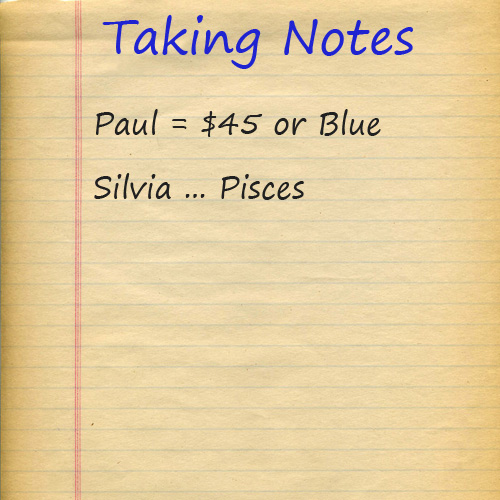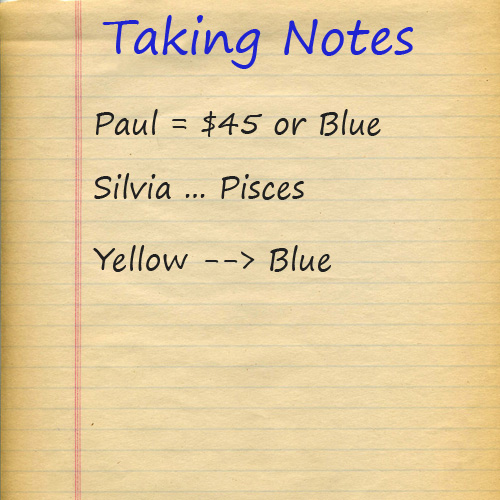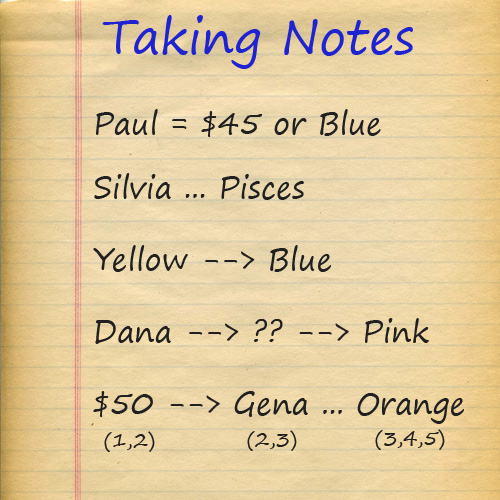Sometimes it is a big help to jot down some notes when solving a logic puzzle - especially the harder/larger ones.
Everyone has their own preferred note-taking methods, and there is no right or wrong way, but here are some tips on how you can convert some clues into meaningful shorthand notes.







